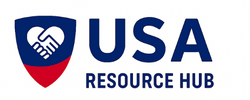Healthcare costs remain a major concern in 2026. Insurance premiums, prescription prices, and out-of-pocket expenses continue to climb, even as new tools and programs emerge to help manage the burden. The challenge is finding ways to reduce costs without compromising the quality of care.
This guide outlines practical strategies that appear to lower healthcare spending while preserving access and outcomes. From prescription discount cards to telehealth services and employer-sponsored wellness programs, each option offers a way to stretch your healthcare dollar further.
Use Prescription Discount Cards to Cut Medication Costs
Prescription prices vary widely depending on the pharmacy, insurance plan, and medication type. Discount cards offer a way to bypass inflated retail prices and access lower rates directly.
Popular options include:
- GoodRx: Provides real-time price comparisons across local pharmacies and offers printable or digital coupons.
- SingleCare: Offers discounts on thousands of medications and includes a loyalty program for repeat users.
- RxSaver: Allows users to search for the lowest prices and apply discounts without insurance.
- ScriptSave WellRx: Includes medication management tools and personalized savings alerts.
These cards are free to use and do not require enrollment in a specific insurance plan. They are especially useful for individuals with high deductibles, limited coverage, or no insurance at all.
Before filling a prescription, it is recommended to compare prices using one or more of these platforms. In many cases, the discounted rate is lower than the insurance copay.
Leverage Telehealth for Routine and Preventive Care
Telehealth has become a mainstream option for non-emergency medical visits. It offers convenience, faster access, and lower costs compared to traditional in-person appointments.
Common uses include:
- Virtual consultations for minor illnesses (cold, flu, skin issues)
- Mental health therapy and counseling
- Prescription renewals and medication management
- Chronic condition monitoring
Many insurance plans now include telehealth as a covered benefit. Some providers offer flat-rate visits, often between $30 and $75, depending on the service.
Recommended platforms include:
- Teladoc Health: Offers general medical, mental health, and dermatology services.
- MDLIVE: Provides virtual care for urgent issues, behavioral health, and wellness coaching.
- Amwell: Partners with health systems to deliver integrated telehealth services.
Telehealth is not suitable for emergencies or complex diagnostics, but it may reduce the need for urgent care visits and free up time for preventive care.
Participate in Wellness Programs That Offer Financial Incentives
Wellness programs are designed to promote healthy habits and reduce long-term healthcare costs. In 2026, many employers and insurers offer incentives for participation, including premium discounts, cash rewards, and free services.
Examples of wellness program features:
- Health risk assessments and biometric screenings
- Smoking cessation support
- Weight management and fitness challenges
- Stress reduction and mental health resources
- Nutrition counseling and preventive care reminders
Employers may offer these programs through platforms like Virgin Pulse, Limeade, or WellSteps. Insurers often integrate wellness tracking into their member portals.
Participation may lead to lower premiums, reduced copays, or direct financial rewards. It is advisable to check with your employer or insurance provider to see what programs are available and how to enroll.
Additional Tips to Reduce Out-of-Pocket Costs
Beyond the main strategies, there are other ways to manage healthcare spending:
- Use urgent care centers instead of emergency rooms for non-life-threatening issues. Costs are significantly lower and wait times are shorter.
- Request generic medications whenever possible. They are chemically identical to brand-name drugs but cost far less.
- Review your insurance plan annually to ensure it still fits your needs. Consider switching to a high-deductible plan paired with a Health Savings Account (HSA) if you are generally healthy.
- Ask for itemized bills and review charges. Billing errors are common and may be corrected upon request.
Affordable Care Starts with Informed Choices
Saving on healthcare does not mean cutting corners. It means using the tools available to make smarter decisions. By combining discount cards, telehealth services, and wellness incentives, families can reduce costs while maintaining access to quality care.


Leave a Reply